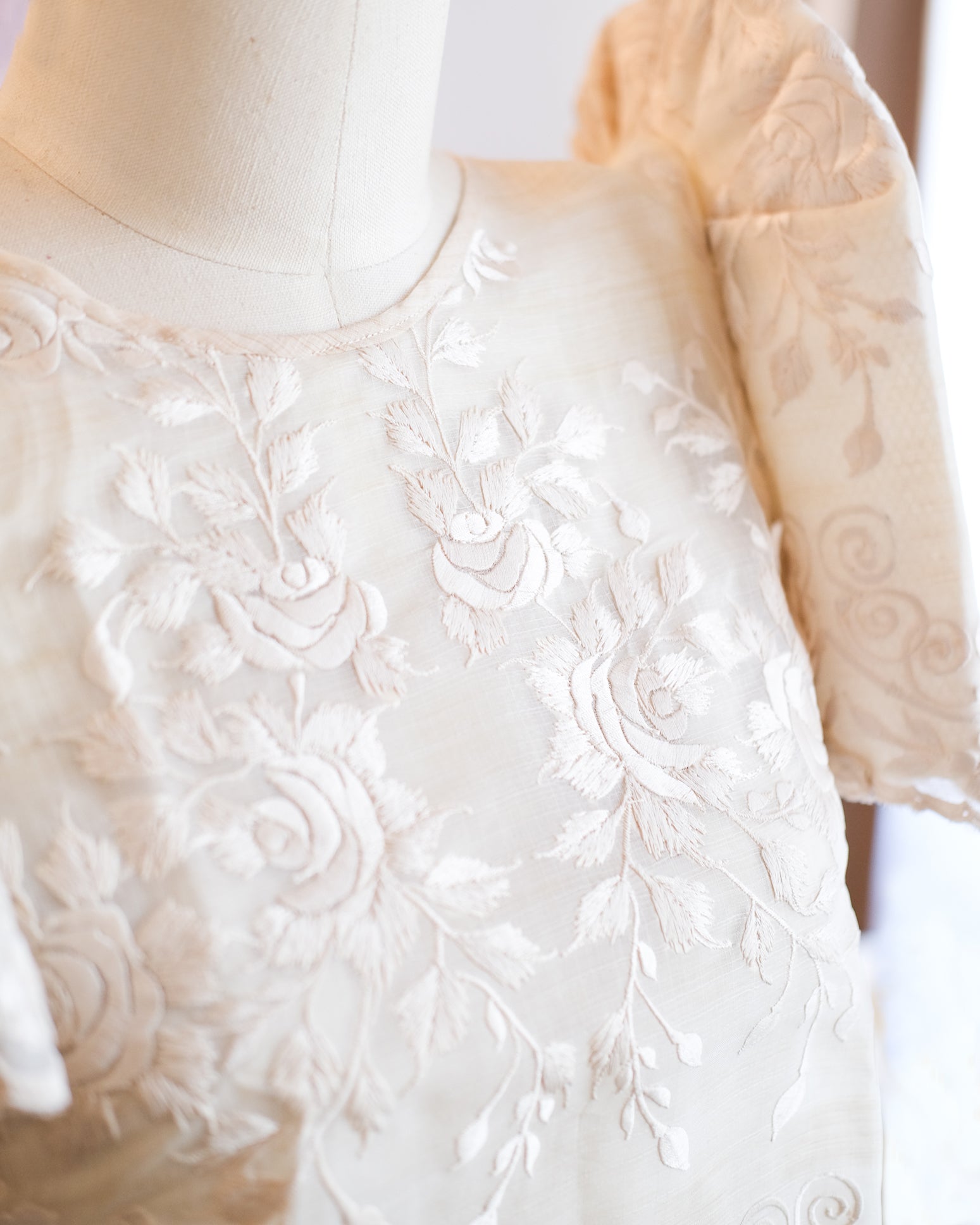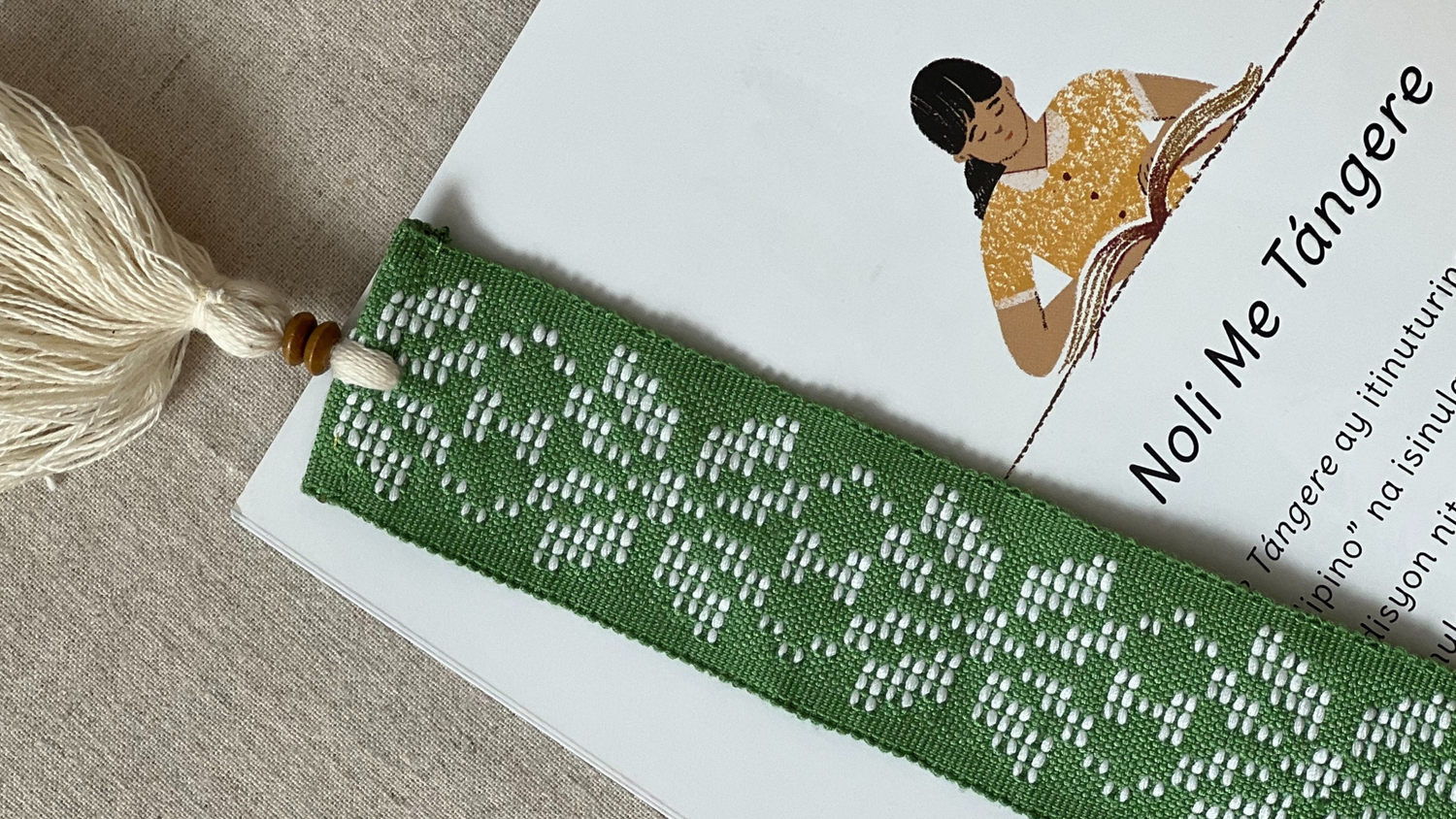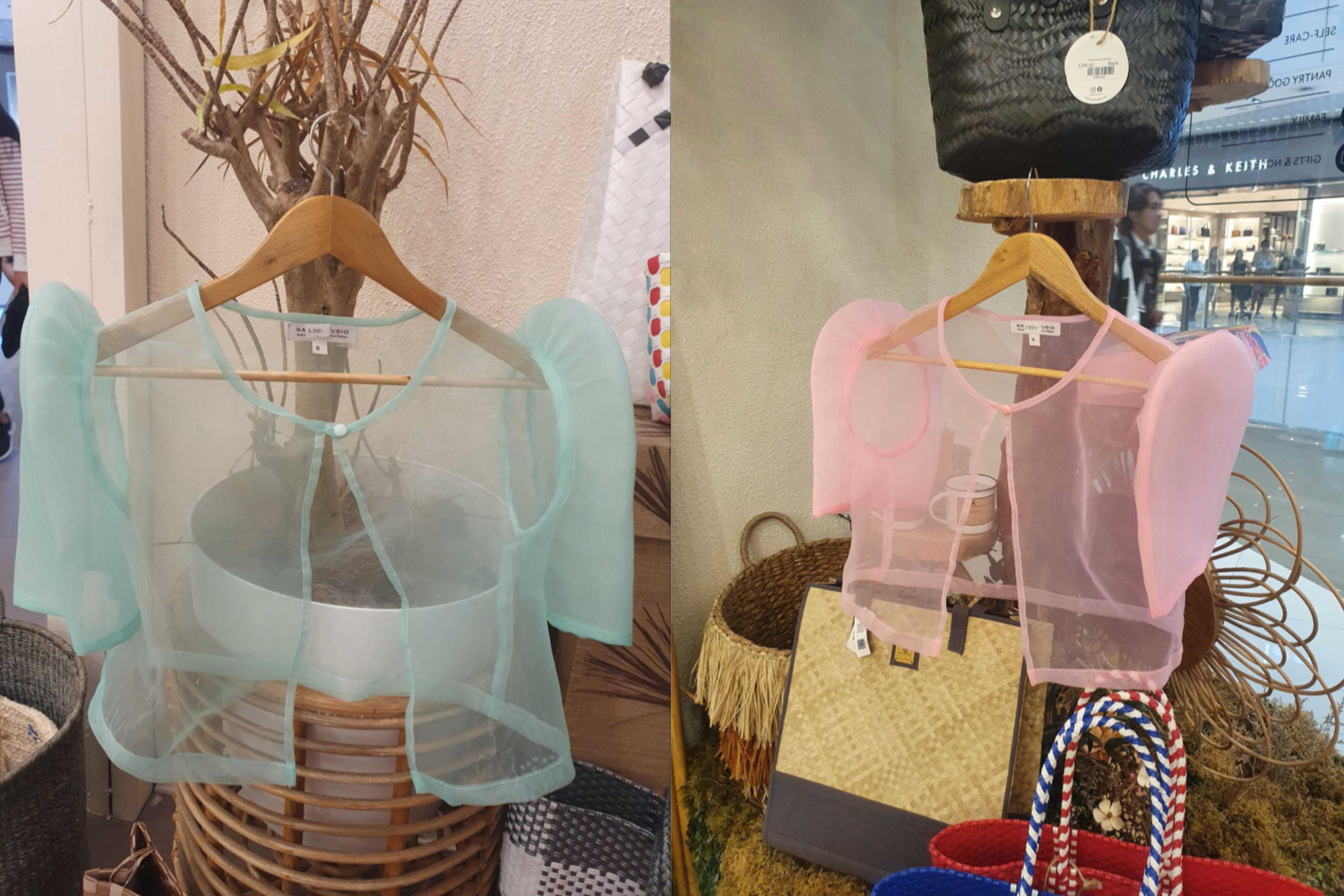The Terno: A resilient companion to a victorious Philippines
For Filipinx making their way across milestones like graduations, weddings, anniversaries, and more, the terno is a resilient companion whose presence marks the most glorious of days.
And just like its wearer, the terno dress has also crossed its own historical milestones.
The terno was not always a terno. From the Spanish word meaning “matched,” terno used to refer not to a continuous garment but to the matching set of camisa (blouse), saya (skirt), panuelo (kerchief), and sobrefalda (overskirt) that made up later styles of the traje de mestiza ensemble. With separate upper and lower garments, the traje de mestiza originated in the 1830s and eventually became the standard dress for women of all backgrounds in colonial Philippines.

 The traje de mestiza - complete with the camisa, saya, panuelo, and sobrefalda, worn both by schoolgirls (left) and women (right). ©Creative Commons
The traje de mestiza - complete with the camisa, saya, panuelo, and sobrefalda, worn both by schoolgirls (left) and women (right). ©Creative Commons
However, with American colonization at the onset of the 1900s, various developments in history prompted the evolution of the traje de mestiza into the terno we know today. From stiff serpentina skirts, the traje de mestiza moved towards a more relaxed silhouette with flatter panuelo and camisa sleeves in the 1910s. The following decade marked the landmark development of the emergence of the butterfly sleeves as influenced by the mobility requirements of dance and jazz. Upright, flattened, oversized, and rounded at the top, the regal “butterfly sleeves” that sit above its wearer’s elbows are now considered the defining feature of a terno. Credited for this innovation is Pacita Longos, a renowned designer in 1920s Manila.
Another turning point in the traje de mestiza’s history was the introduction of the zipper in the 1930s, transforming it into the one-piece bodice zipped at the back, as it is often worn today. The 1940s, meanwhile, saw the removal of the panuelo and the sobrefalda. However, some scholars argue that women have been wearing the terno without a panuelo as early as the 1910s. The terno which previously referred to the traje de mestiza’s matching yet distinct components became wholly a garment of its own--the one-piece dress with butterfly sleeves that is a culmination of centuries-worth of innovation by designers and wearers alike.
 Filipinas in their terno gowns in 1951
Filipinas in their terno gowns in 1951
Up until the 1930s, the terno was part of everyday wear. However, debates surrounding the terno’s practicality for daily movement and a former dictator’s First Lady’s ostentatious obsession with the dress caused the ubiquity of the terno to fall out. But just like its wearers who have braved setbacks and storms, the terno reclaimed its elegant seat in Filipino culture. It’s the perfect match for all occasions that mark the most special moments of life: ceremonies, celebrations, graduations, weddings, and more. More recently, contemporary designers have created the terno for daily wear, incorporating the butterfly sleeves into modern styles.
 Narra Studio Embroidered Terno
Narra Studio Embroidered Terno
Thus, with a history alongside wars and tyrants, the terno is a sophisticated testament to the Philippines' unwavering resilience and perseverance. It’s a perseverance over entire centuries and communities of artisans, dressmakers, and terno afficionados. For as long as the Philippine culture is victorious, the terno will be here to stay.





